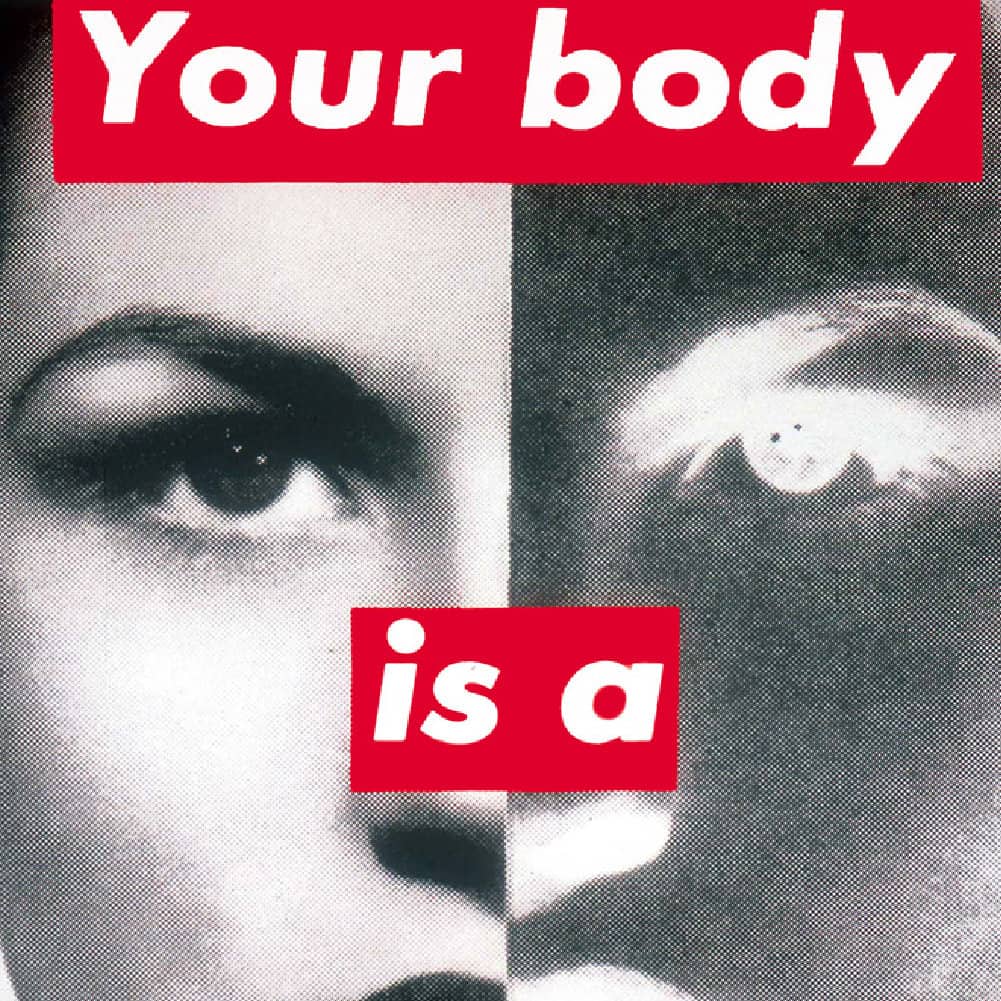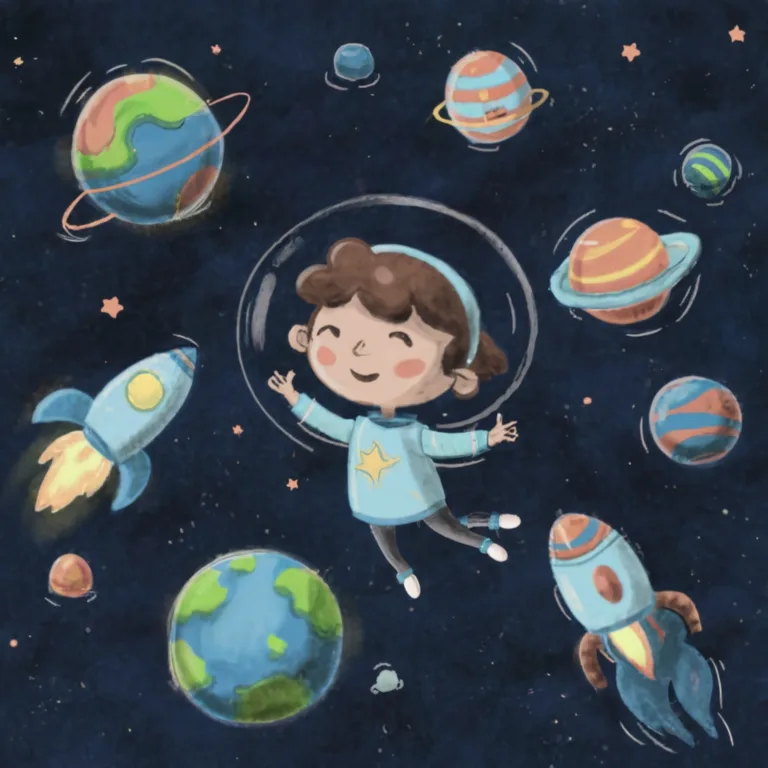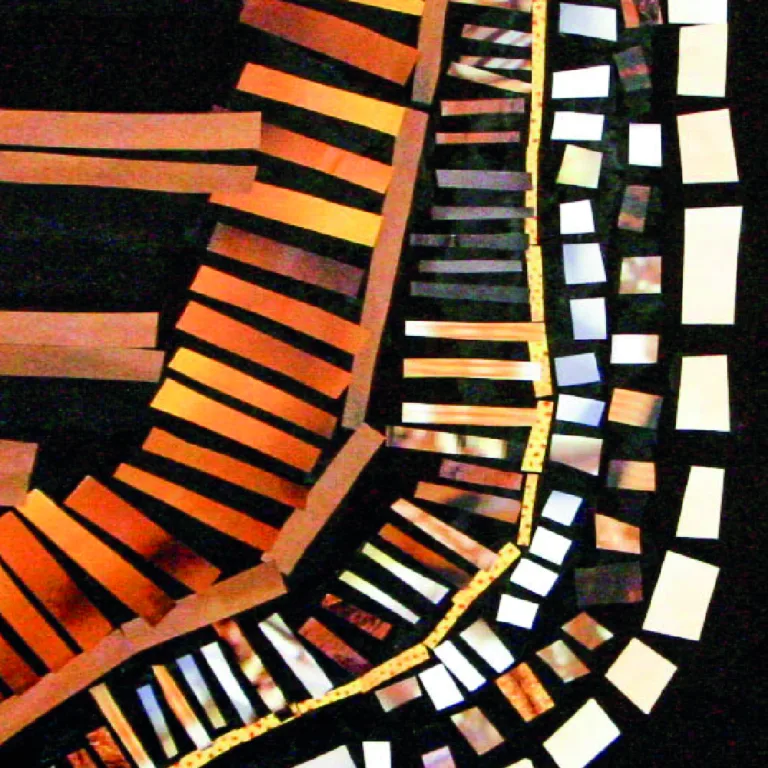Creating Art for Social Change: How Art Can Inspire Activism
Art is a universal language that has the ability to transcend linguistic, cultural, and geographical barriers. It can provoke a range of emotions, from joy and happiness to sadness and anger, and it can convey powerful messages that can inspire change. Art has the power to move us, challenge our perceptions, and help us connect with one another on a deeper level.
It can serve as a platform for marginalized voices to be heard, to advocate for social justice, and to bring about positive change. In essence, art is a powerful means of communication that can touch the hearts and minds of people around the world, regardless of their backgrounds, beliefs, or experiences.
Read also: 10 Powerful Examples of Art That Sparked Social Change
For centuries, artists have used their craft as a tool for activism and social change, from Francisco Goya‘s paintings denouncing the horrors of war to Shepard Fairey‘s posters calling for hope and progress. In today’s world, where issues of injustice, inequality, and discrimination continue to persist, the power of art as a catalyst for social change has never been more relevant.
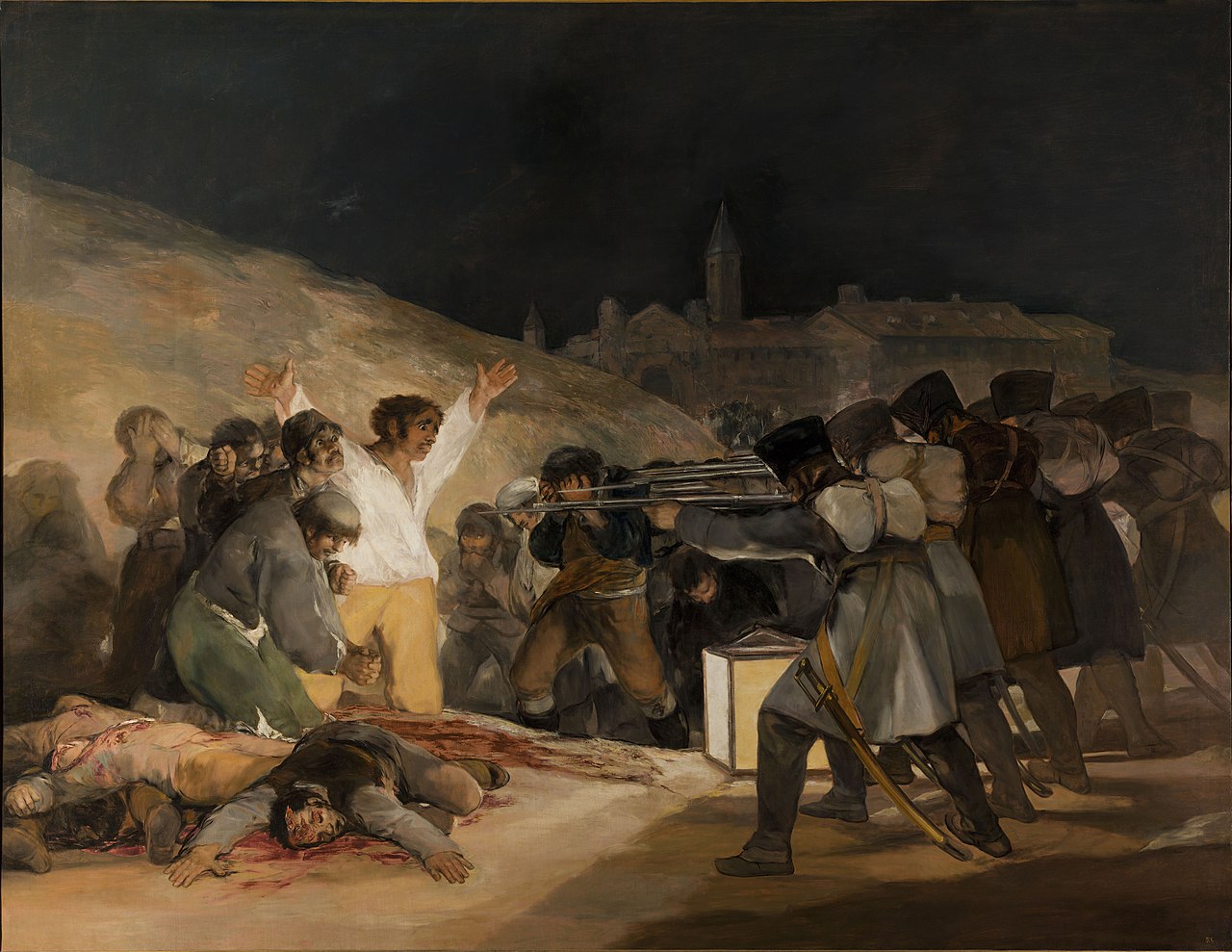
For art teachers, understanding the intersection of art and activism is crucial as it can enrich art education by helping students understand the broader context in which art is created and how it can be used to address social issues. Additionally, art can be used to enhance other subjects and curriculums, such as history, social studies, and language arts. By teaching students how art can be a tool for activism, teachers can help prepare them to become engaged and socially conscious citizens.
Read also:
- The Shift from STEM to STEAM: Why Soft Skills Are Crucial for Your Child’s Education
- How Art Appreciation Fosters Critical Thinking and Problem-Solving in STEAM
In this article, I’ll delve into the topic of creating art for social change and how it can enrich other subjects and curriculums. We will examine historical examples of artists who have used their craft as a means of activism and explore contemporary artists who are making an impact in areas such as feminism, racism, migration, LGBT rights, climate change, and war. Additionally, I will provide practical tips for art teachers who want to incorporate social justice themes into their lessons and projects.
Through this exploration, I hope to inspire art teachers to see the potential of their role as educators to not only teach artistic skills, but to also cultivate a generation of socially conscious citizens who are capable of making a positive impact on the world.
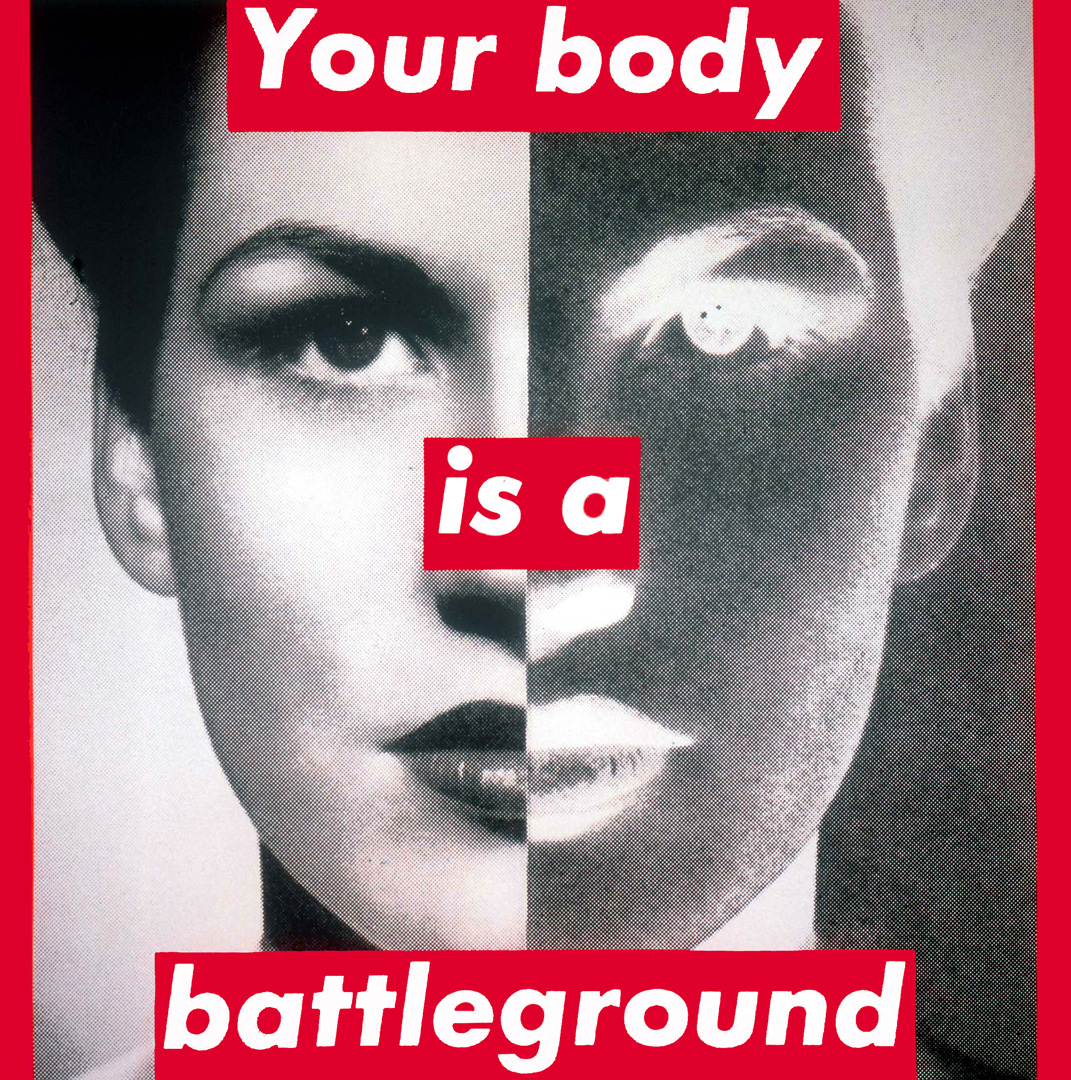
Historical Examples of Art as Activism
Artists are shaped by the society in which they live. The social, political, and cultural context of a particular time and place can influence an artist’s values, beliefs, and creative output. Art often serves as a reflection of the social climate of its time, capturing historical events and societal attitudes. Through their work, artists have commented on and critiqued a range of social issues, including civil rights, equality, war, and environmental crises. Their powerful messages and images have resonated with audiences and inspired change. By examining how art reflects and responds to the social climate of its time, we can gain a deeper understanding of historical and cultural contexts and appreciate the role of art in promoting social justice.
Here is a list of historical examples of artists who used their work to comment on social issues and inspire social change:
Francisco Goya – A Spanish painter who created politically charged artwork during the 18th and 19th centuries, including his famous series of prints “The Disasters of War” which depicted the atrocities of war.
Jean-Francois Millet – The French painter was a powerful critic of the social and economic conditions of rural France in the 19th century. His paintings of peasants and rural laborers, such as “The Gleaners” and “The Angelus,” were used to call attention to the poverty and exploitation of the working class.

Honoré Daumier – The French printmaker and caricaturist used his work to criticize the social and political injustices of his time. His series of lithographs, “Les Gens de Justice,” depicted corrupt and incompetent judges, lawyers, and police officers, while his political cartoons were used to attack the government of King Louis-Philippe.
Jacob Lawrence – An African American painter who used his art to depict the struggles and achievements of the civil rights movement in the United States during the mid-20th century.
Pablo Picasso – A Spanish painter who created the iconic anti-war painting “Guernica” in response to the bombing of the Spanish town of Guernica during the Spanish Civil War.
Judy Chicago – An American feminist artist who created the groundbreaking installation artwork “The Dinner Party” in 1979, which celebrated the achievements of women throughout history.
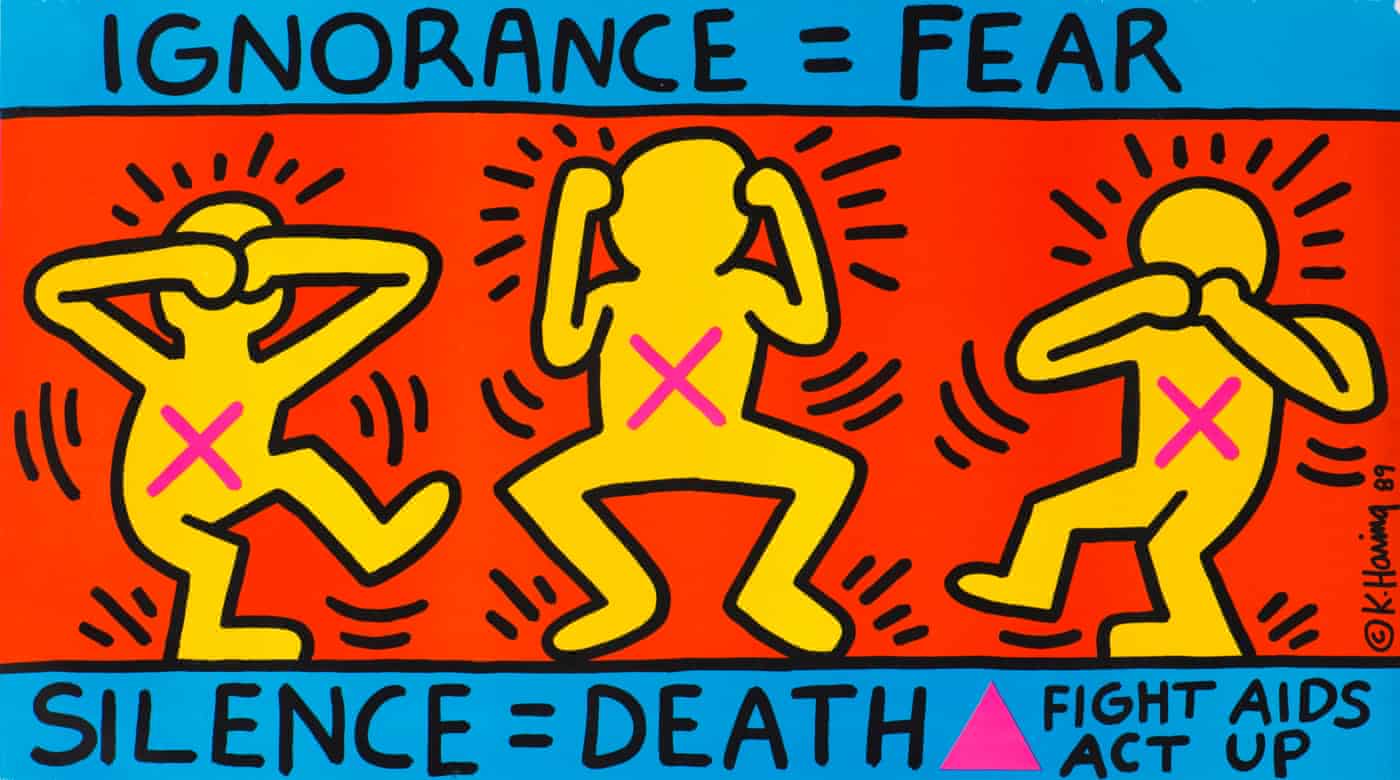
Keith Haring – An American artist and activist who used his bold and colorful artwork to raise awareness about issues such as AIDS, drug abuse, and nuclear disarmament during the 1980s.
Diego Rivera – A Mexican painter who created large-scale murals depicting the struggles of the working class and the history of Mexico during the early 20th century.
Kathe Kollwitz – A German artist who used her art to depict the struggles of the working class and the horrors of war during the early 20th century.
William Hogarth – An English painter who created satirical prints that exposed the corruption and injustices of 18th century British society.

Dorothea Lange‘s photograph “Migrant Mother” (1936) captures the struggles of a mother and her children during the Great Depression and became a symbol of the plight of migrant workers.
Contemporary Examples of Art as Activism
In recent years, there has been a resurgence of artists using their work to inspire social change and promote activism. From tackling issues of racism and gender inequality to raising awareness about environmental and political issues, contemporary artists have been pushing the boundaries of traditional art forms to create work that has a meaningful impact on society. In this section, we will explore a range of contemporary artists who are using their work to inspire change across a variety of topics, including feminism, war, social issues, environmental issues, colonialism, LGBT rights, racism, and migration.

Gender issues:
- Judy Chicago‘s installation artwork, “The Dinner Party” (1974-79), celebrates women’s achievements throughout history and challenges the male-dominated art world.
- The Guerilla Girls, a feminist artist collective founded in the 1980s, used provocative posters and performance art to bring attention to issues of sexism and racism in the art world.
Read also:
Art for Social Change: Inspiring Stories of Female Artists Who Transformed the World

Racism:
- Jacob Lawrence‘s series of paintings, “The Migration of the Negro” (1940-41), tells the story of the Great Migration of African Americans from the rural South to the urban North and depicts the struggles and injustices faced by Black Americans during that time.
- Kerry James Marshall creates paintings and installations that explore African American history and culture. His most famous work is probably “Our Town” (1995), a series of paintings that depict ordinary black people engaged in everyday activities, challenging the stereotypes and caricatures that have traditionally dominated representations of black life in America.
- Hank Willis Thomas uses photography, sculpture, and mixed media to explore issues of race, identity, and consumer culture. His most famous work is probably “Branded Head” (2003), a series of photographs in which he digitally removes the logos and branding from advertisements featuring black models, highlighting the ways in which black bodies are commodified in American culture.
- Titus Kaphar creates paintings, sculptures, and installations that explore the ways in which African American history and identity have been erased or misrepresented. His most famous work is probably “The Jerome Project” (2014), a series of paintings that depict black men who have been incarcerated in the United States, and whose mugshots have been obscured by layers of tar and white paint.

Migration:
- Khaled Jarrar – Palestinian artist Khaled Jarrar has created several works addressing issues of borders and migration, including “Journey 110” (2011), in which he walked the entire length of the Israeli separation barrier and collected small pieces of it to create a sculpture.
- Ai Weiwei – Chinese artist and activist Ai Weiwei has created numerous works addressing the refugee crisis, including “Laundromat” (2016), which featured the clothing and personal items left behind by migrants at refugee camps.
- Ana Teresa Fernandez – Mexican-American artist Ana Teresa Fernandez has created several works addressing issues of migration and the border, including “Erasing the Border” (2011), in which she painted over the border fence separating the United States and Mexico to create the illusion of a continuous landscape.

LGBT rights:
- Keith Haring‘s artwork, such as “Silence=Death” (1987) and “Ignorance=Fear” (1989), were created during the AIDS crisis to promote awareness and activism.
- The AIDS Memorial Quilt, which was created in 1987, commemorates the lives of people who have died from AIDS and has been used as a tool for activism and education.
- The rainbow flag, designed by Gilbert Bakerin 1978, has become a symbol of the LGBTQ+ rights movement and has been used in protests and celebrations around the world.
- Catherine Opie‘s portraits of LGBT activists, artists, and performers celebrate the diversity and richness of queer culture, while also calling attention to issues of discrimination and marginalization.
- Zanele Muholi: Muholi is a South African visual activist and photographer who is known for their work documenting and celebrating Black LGBTQ+ identities. Their work often explores themes of race, gender, and sexuality, and they have been instrumental in bringing greater visibility to queer and trans people of color in South Africa and beyond.
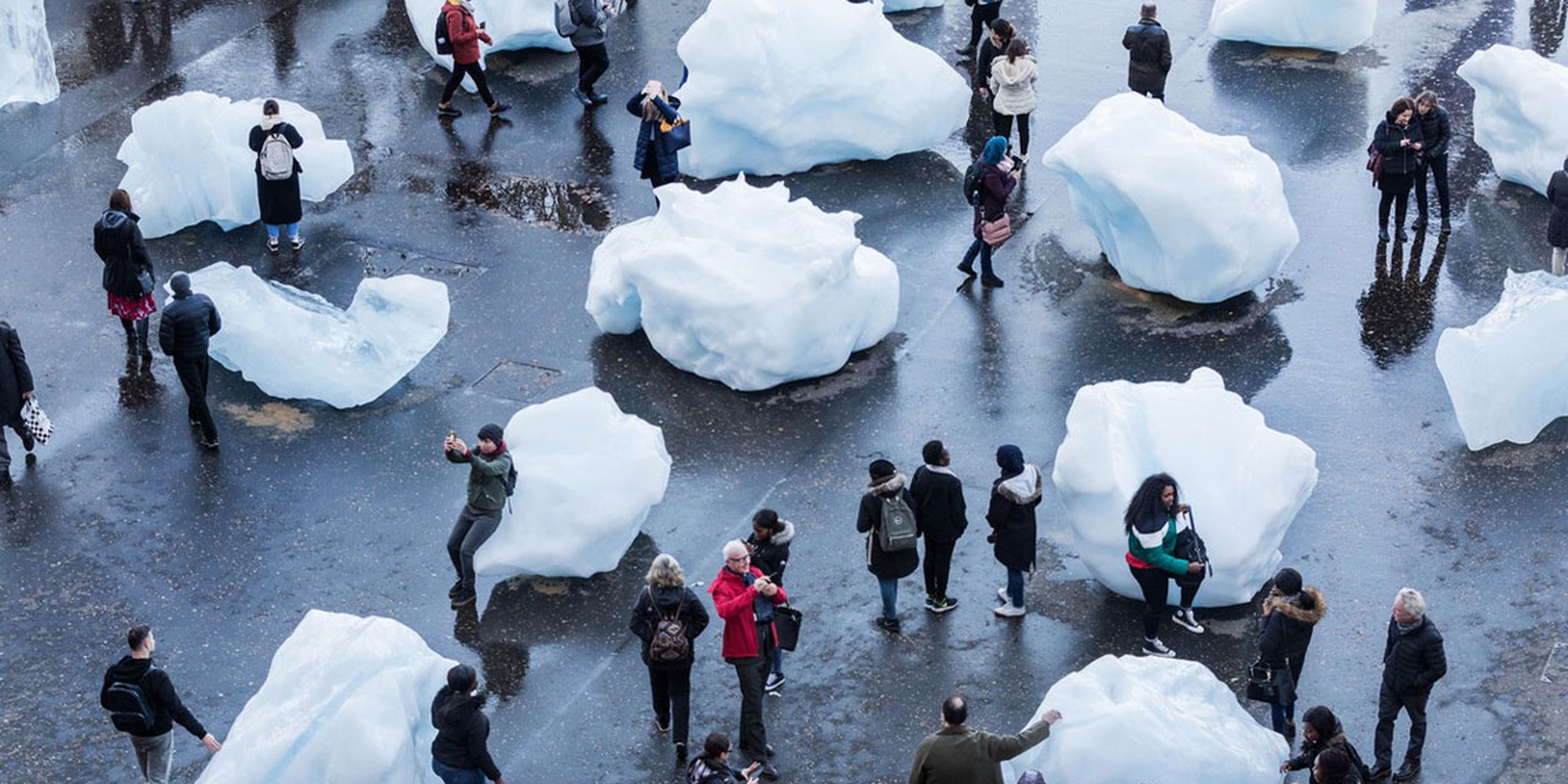
Environmental issues:
- Olafur Eliasson‘s “Ice Watch” (2014-2019), in which large ice blocks from Greenland were displayed in public spaces, aimed to raise awareness of the urgent need to address climate change.
- Ana Mendieta‘s “Silueta” series (1973-1980) uses her body as a site for environmental and feminist art, exploring the relationship between humans and nature.
- The Climate Museum, a new museum dedicated to the impact of climate change, uses art and science to inspire action and awareness about environmental issues.
Read more:
- 11 of the Best Earth Day Books for Children to Learn about Enviromentalism and Sustenability
- 13 Inspiring Eco-Art Examples Students Will Love | Explore Environmental Art
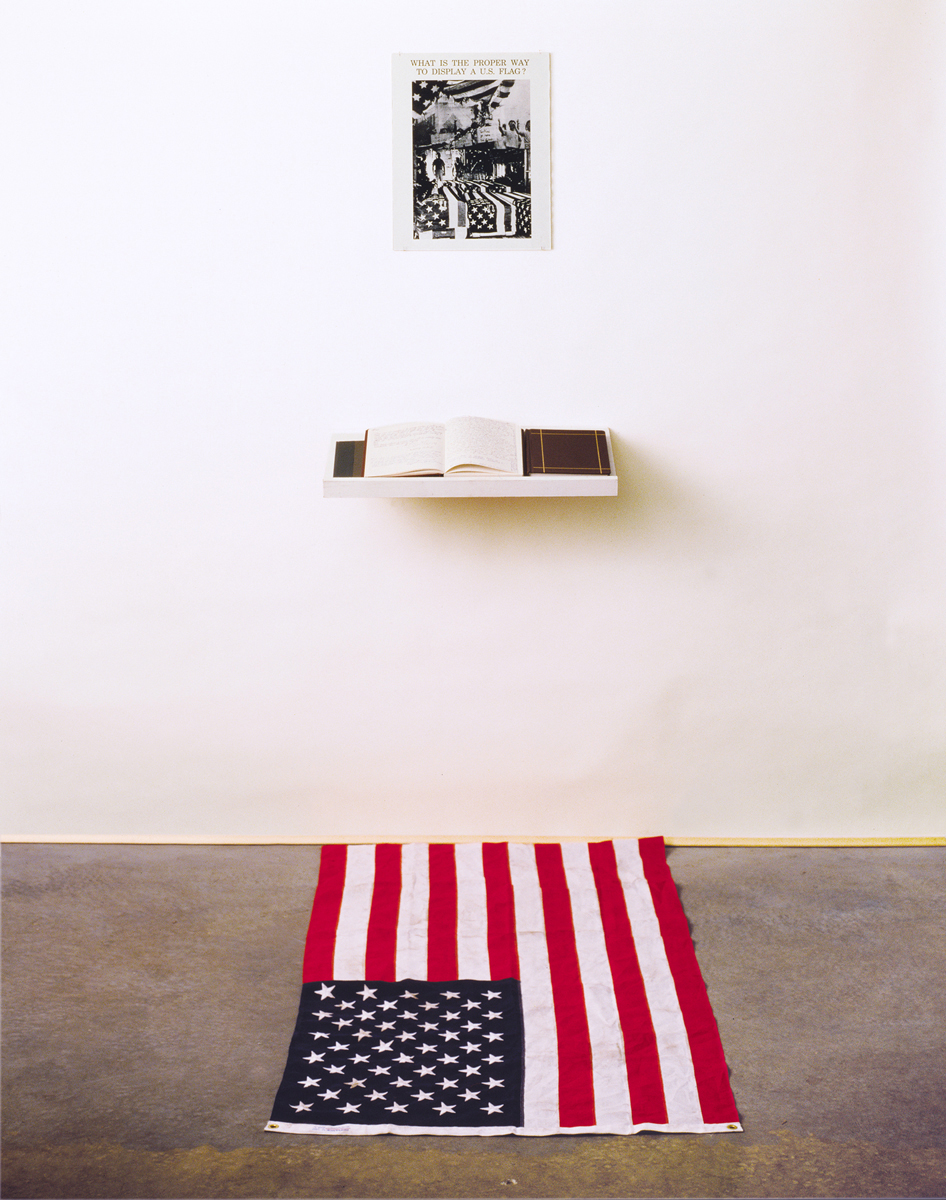
Social inequality
- Dread Scott‘s “What Is the Proper Way to Display a US Flag?” (1989) is a controversial installation that questions the meaning and symbolism of the American flag, and the role of patriotism in promoting social inequality.
- Ai Weiwei‘s “Sunflower Seeds” (2010) is an installation of over 100 million porcelain sunflower seeds, symbolizing the labor and exploitation of Chinese workers in the global economy.

War:
- The Iraq War protest art movement, which included street art, installations, and performances, aimed to raise awareness and encourage activism against the war
- The work of Syrian artist Tammam Azzam, including his iconic “Freedom Graffiti” (2011) series, reflects on the devastating impact of war and conflict on everyday people.
- Banksy’s “Bomb Hugger” (2003) – This stencil artwork depicts a young girl hugging a bomb, and is a powerful statement about the impact of war on innocent civilians. Banksy is known for his politically charged street art, which often critiques the government and the military.
- Yoko Ono‘s “Imagine Peace” (2007) – This installation features a series of billboards with the words “IMAGINE PEACE” written in bold letters. Ono created the work as a tribute to her late husband John Lennon, who was a vocal advocate for peace. The billboards have been displayed in cities around the world, and are meant to inspire people to work towards a more peaceful future.
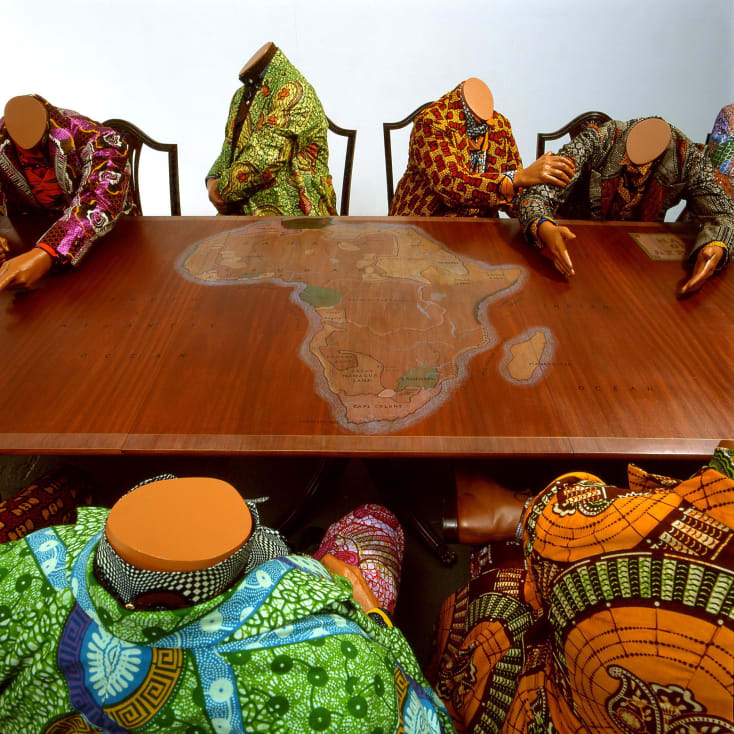
Colonialism and globalization:
- Yinka Shonibare – The British-Nigerian artist is known for his sculptures, installations, and paintings that explore issues of race, identity, and colonialism. His work often features African fabrics and patterns, which he uses to challenge stereotypes and assumptions about African culture.
- Wang Guangyi – The Chinese painter is known for his series of works titled “Great Criticism,” which use the visual language of propaganda art to critique the political and social realities of post-Mao China. His work often reflects on the impact of colonialism and globalization on China and its people.
- El Anatsui – The Ghanaian sculptor creates large-scale installations using discarded metal bottle caps and other found materials to explore themes of consumption, globalization, and cultural identity. His work “Gravity and Grace” was inspired by the Kente cloth of his homeland and the history of African trade and colonialism.
Read also:
- Sunil Gupta – The Indian-Canadian photographer’s work often explores issues of queerness, race, and identity. His series “Christopher Street” documents the LGBTQ community in New York City in the 1970s and ’80s, while his later work “Sun City” examines the impact of British colonialism on LGBTQ communities in India.
- Wangechi Mutu – The Kenyan artist’s mixed-media works often incorporate found objects and collage to explore issues of gender, race, and power. Her work “The End of Eating Everything” reimagines the myth of Adam and Eve as a commentary on colonialism, capitalism, and the exploitation of natural resources in Africa.

The Power of Art as a Tool for Social Change
Art has the unique ability to transcend language, culture, and borders, making it a powerful tool for promoting social justice and raising awareness about important issues. By creating work that reflects the struggles and experiences of marginalized communities, artists can challenge dominant narratives and promote empathy and understanding, encouraging people to see the world from a different perspective.
Art has the power to inspire people to take action and spark important conversations about social issues. Whether it’s through a powerful image, a thought-provoking performance, or a moving piece of music, art can touch people on a deep emotional level and create a sense of urgency that mobilizes them to take action.

Beyond inspiring action, art can also be a powerful tool for raising awareness about social issues. By creating work that reflects the struggles and experiences of marginalized communities, artists can help to shed light on important issues that may otherwise go unnoticed or ignored. Through their work, they can challenge dominant narratives and promote empathy and understanding, encouraging people to see the world from a different perspective.
Overall, the power of art as a tool for social change lies in its ability to connect with people on a deep emotional level and inspire them to think critically about the world around them. Whether it’s through raising awareness, inspiring action, or promoting empathy and understanding, art has the power to create meaningful change in the world.
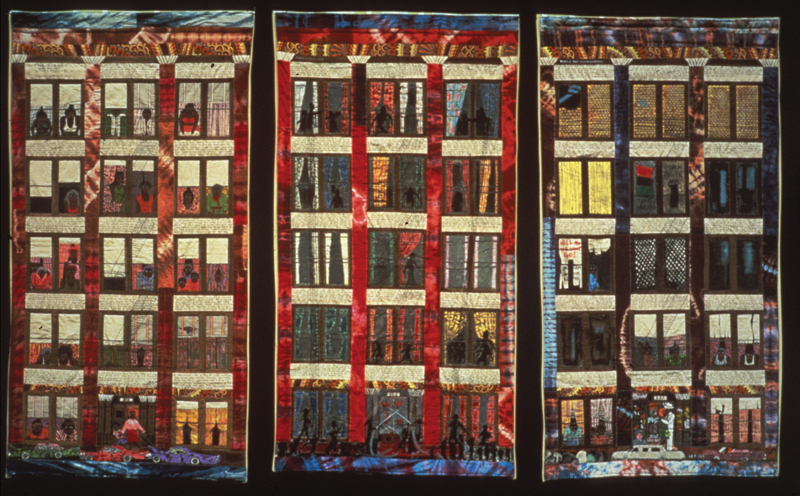
Tips for Creating Art with a Message
Encouraging students to create art with a message can be a powerful way to promote social change and raise awareness about important issues. Here are some practical tips that they can follow when creating art for social change:
- Choose a message and theme: Before starting the project, students should think about what message they want their artwork to communicate. They should choose a social issue that they’re passionate about, such as environmental conservation, social justice, or inequality. Once they’ve chosen a message, they should think about how they can effectively communicate it through their artwork.
- Choose an art form: There are many different art forms that can be used to inspire activism, including painting, drawing, sculpture, photography, film, and performance art. They should consider which art form will best communicate their message and choose one that they feel comfortable with.
- Research historical and contemporary examples: Students should look for examples of other artists who have used their work to inspire social change. They should research historical and contemporary examples of artists who have used their work to raise awareness about social issues and use these examples as inspiration for their own work.
- Keep it clear and concise: When creating art with a message, it’s important to communicate ideas clearly and concisely. They should use simple and direct imagery and text to communicate their message and avoid overwhelming their audience with too much information.
- Consider their audience: They should think about who their audience is and how they will receive their message. Consider using humor, irony, or other creative approaches to engage their audience and help them connect with their message.
Read also: Mastering Lesson Plan Design: Strategies for Creating Engaging Art Classes
By following these practical tips, students can create powerful and impactful art that can inspire social change and promote important conversations about social issues.

Art activism: Challenges and Considerations
Teaching and creating art that is inspired by social issues is a crucial task for art educators, but it is not without its challenges. One of the most significant obstacles is navigating the potential for controversy and politicization that can arise when addressing sensitive topics through art. This means approaching the subject matter thoughtfully and respectfully, being aware of personal biases, and encouraging empathy and understanding in students.
Another challenge is avoiding perpetuating harmful stereotypes or trivializing important issues. To overcome this challenge, art teachers must conduct thorough research and engage with diverse perspectives to provide context and insight into the issues being addressed. This can also include bringing in outside experts or resources to provide additional information and support for students.
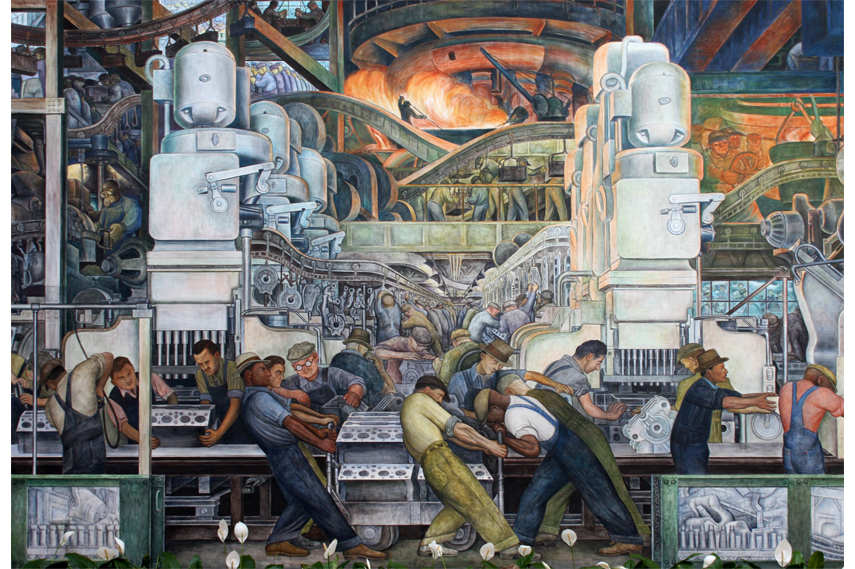
Additionally, addressing difficult-to-discuss subjects and complex issues can be challenging, especially when working with younger students. Creating a safe and inclusive environment where students feel comfortable expressing themselves and discussing sensitive topics is essential. Providing historical background, encouraging critical thinking and reflection, and using art as a means of communicating important messages are all strategies that can help students approach their art with empathy and understanding.
Despite the challenges and considerations, creating art for social change is an important tool for promoting positive change in society. Art educators must be aware of the potential obstacles and equip themselves with the necessary strategies to overcome them. Through careful planning, thoughtful reflection, and empathy, art teachers can inspire their students to use their art as a tool for activism and social change.
As an art teacher, it is essential to prepare oneself to deal with sensitive topics that may arise when teaching and creating art for social change. One way to do this is by staying informed and educated on current events and social issues, as well as the historical and cultural contexts that surround them. Additionally, seeking out diverse perspectives and resources, such as books, documentaries, and guest speakers, can provide valuable insight into the complexities of these issues and help facilitate open and inclusive discussions with students.
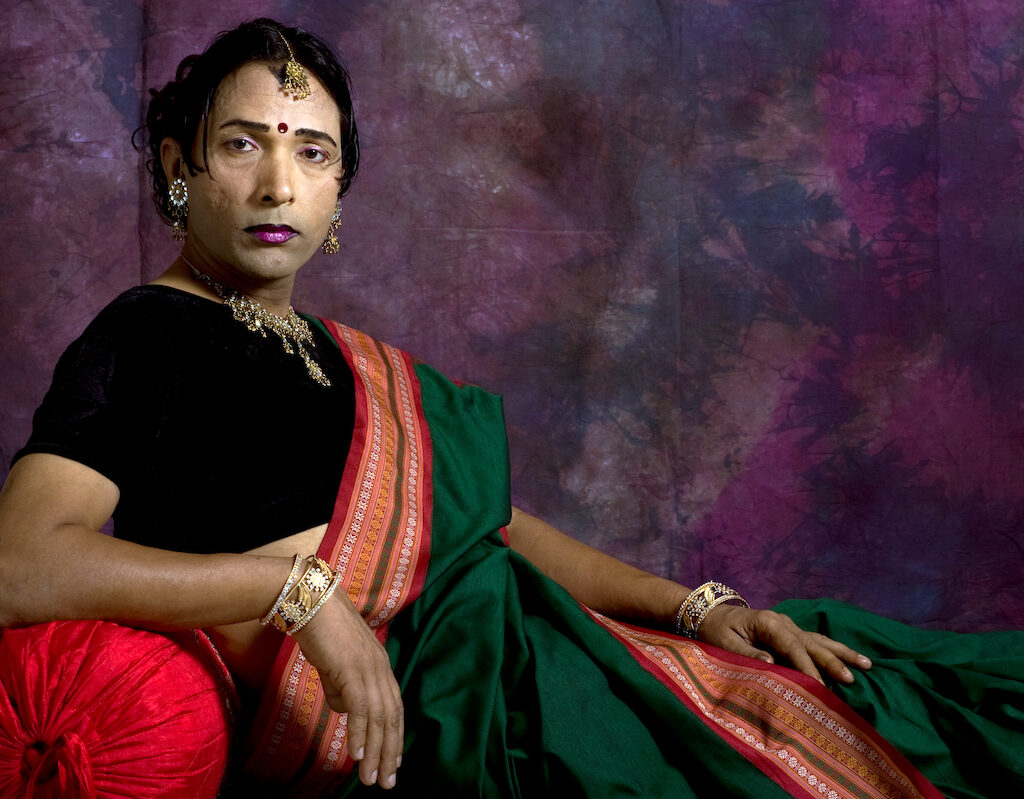
It is also crucial for art teachers to create a safe and inclusive environment in which students feel comfortable sharing their experiences and perspectives. This means actively listening to and validating students’ feelings, being aware of one’s own biases and assumptions, and avoiding judgment or shaming. Teachers should also encourage students to engage in respectful and constructive dialogue and provide guidance on how to communicate effectively and with empathy.
Ultimately, preparing oneself to deal with sensitive topics involves a commitment to ongoing learning, reflection, and growth. It requires a willingness to challenge one’s own beliefs and assumptions, to be open to diverse perspectives, and to cultivate a sense of empathy and understanding towards others. By doing so, art teachers can create a supportive and inclusive learning environment where students can explore and express their ideas and emotions through their art, contributing to positive change in their communities and beyond.

In conclusion, art has the power to inspire social change and promote awareness of important issues. By incorporating social justice themes into their teaching and encouraging students to create art with a message, art teachers can inspire activism and promote positive change in their communities. However, there are challenges and considerations that must be taken into account when dealing with sensitive issues, such as the risk of perpetuating harmful stereotypes or trivializing important topics. Through preparation, education, and a commitment to creating a safe and inclusive environment, art teachers can effectively navigate these challenges and promote constructive dialogue and action.

As art teachers, we have a unique opportunity to encourage our students to use their creativity and artistic expression to make a difference in the world. By exploring historical and contemporary examples of art as activism, offering practical tips for creating art with a message, and preparing ourselves to deal with sensitive topics, we can inspire our students to become agents of positive social change.
Let us use our passion for art to inspire and promote social justice, creating a more equitable and inclusive world for all.
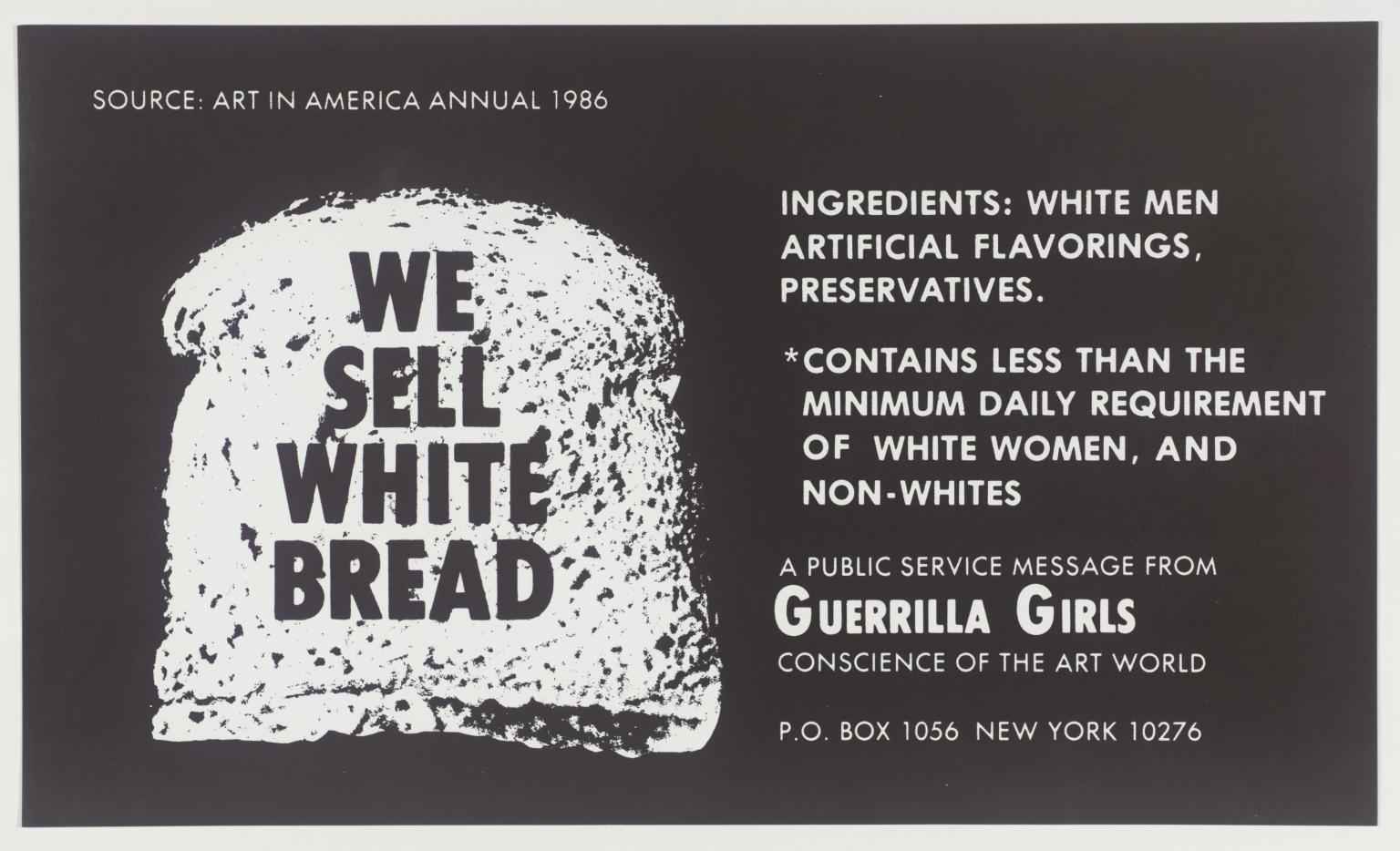
Resources
Here are some additional resources for art teachers who want to learn more about creating art for social change:
- “A Brief History of Protest Art” Aindrea Emelife
- The Art of Education: This website offers resources, articles, and courses for art teachers, including several articles on using art for social change.
- National Art Education Association (NAEA): The NAEA offers resources, webinars, and conferences for art teachers, including several sessions on creating art for social change.
- The Teaching for Change website: This website offers a variety of resources and lesson plans for teachers interested in incorporating social justice issues into their curriculum.
- The Art for Social Justice Education project: This project is dedicated to exploring the role of art in promoting social justice and provides resources and lesson plans for educators.
- The Artivist Network: This online community is dedicated to promoting art as a tool for social change and provides resources, networking opportunities, and support for artists and activists.
- The Center for Artistic Activism: This organization provides training and resources for artists and activists interested in using art to create social change.
- The Creative Time Reports website: This website features a variety of articles and essays by artists, activists, and scholars on the intersection of art and social justice.
- Dewhurst, Marit. “Social Justice Art: A Framework for Activist Art Pedagogy”
- Thompson, Nato. “Seeing Power: Art and Activism in the Twenty-first Century.” Melville House, 2015.
- Thompson, Nato. “Living as Form: Socially Engaged Art from 1991-2011.” The MIT Press, 2017
- Raincovich, Laura. “Culture Strike: Art and Museums in an Age of Protest”
- “Art and Social Justice Education: Culture as Commons”, by Therese Quinn, List Hochtritt and John Ploof
- Adams, M., Bell, L., & Griffin, P. (Eds.). (2007) “Teaching for diversity and social justice” New York, NY: Routledge. This book looks at social justice education by analyzing numerous structures of oppression and pedagogical philosophies. It helps to articulate approaches in social justice education and provides an important framework for questioning and inspiring our teaching practice.
- DiAngelo,Sensoy “Is everyone really equal? An introduction to key concepts in social justice education. New York, NY: Teachers College Press. This book serves as a comprehensive introduction to social justice education and its pedagogy, covering discrimination, privilege, racism, sexism, oppression, power and white supremacy. It challenges future teachers to critically deconstruct all their practices to recognize bias and carry out anti-oppressive teaching.
- Gablik, S. (1991). “The Reenchantment of Art”. New York: Thames & Hudson. This seminal book is not an art education text, but offers an alternate vision of art-making and educating based on Gablik’s theory of “connective aesthetics”. By better connecting art to the realities of daily living, she argues that art can be used effectively as an agent of social change, one that can capture the public’s attention through its creative, innovative approaches to society’s problems.
- Hanley, M. S. (2013). “Culturally Relevant Arts Education for Social Justice: A Way Out of No Way”. New York: Routledge.
Save for Later


